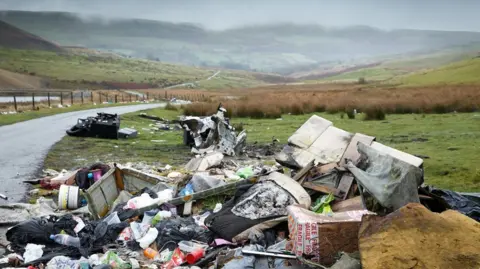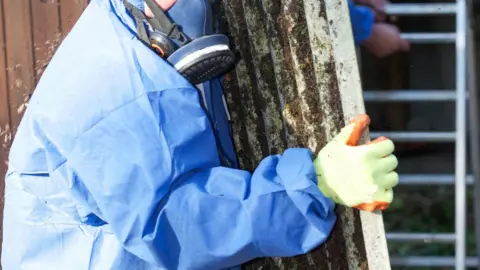Fly-tipping: Asbestos rubbish dumping hits 10-year high
 Equinox
EquinoxThe number of incidents of asbestos fly-tipping in Wales hit a 10-year high last year, new figures have shown.
In 2016-2017, 270 cases of asbestos fly-tipping were recorded, up from 172 the year before - a 57% increase.
Merthyr Tydfil had the highest overall fly-tipping rate with one incident for every 30 people, compared to one incident for every 735 in Wrexham.
Natural Resources Wales said it was "vital people are aware of their responsibilities".
Fly-tipping hit its highest rate since 2010-11 with people mainly dumping waste along highways or on footpaths, often amounts that would fill a car boot or a small van.
Rebecca Favager, NRW's waste manager said: "Understanding and complying with the duty of care is key to stopping waste getting into the hands of illegal waste operators and can result in public money being saved, less damage to the environment and protection for operators who do comply with the law."
Removing illegally dumped waste costs smaller councils tens of thousands of pounds, with the cost rising to hundreds of thousands in larger cities.
The Welsh Government has set statutory targets for recycling that local authorities must meet or risk facing fines.
By 2050, the Welsh Government is aiming for no waste at all ending up in landfill.
Some AMs have warned that reducing the frequency of waste collection to meet recycling targets is leading to increased fly-tipping.
Shadow local government secretary, Janet Finch-Saunders, said: "We remain firmly opposed to these proposals to roll out four-weekly refuse collections.
"The pilot scheme has proven to be extremely unpopular with local residents, and complaints relating to litter, fly tipping and pests have become a regular feature of our mail bags in recent months."

 Getty Images
Getty ImagesWhat is asbestos?
- A name given to several naturally-occurring fibrous minerals
- Used due to their strong, heat and chemical-resistant properties, but using it in buildings is now banned
- Breathing in high concentrations over a long period of time can cause health problems including asbestosis and lung cancer
- Classified as a human carcinogen for which no absolutely safe level can be specified
